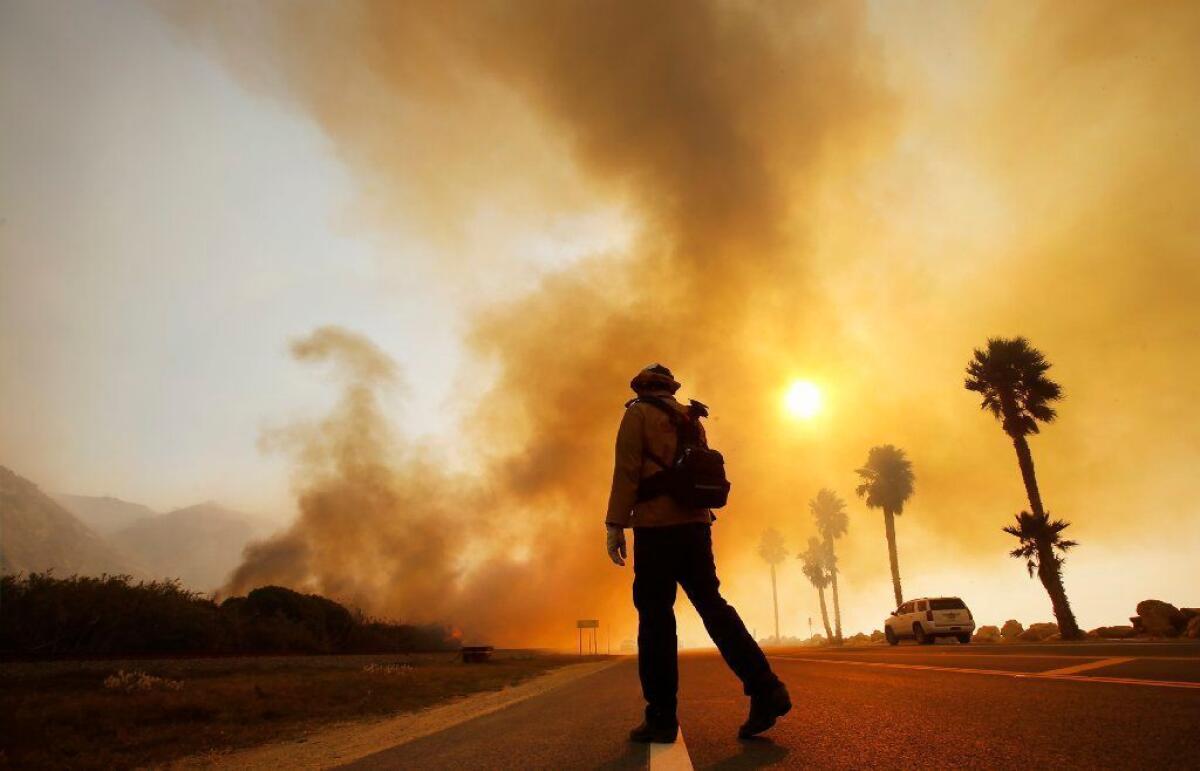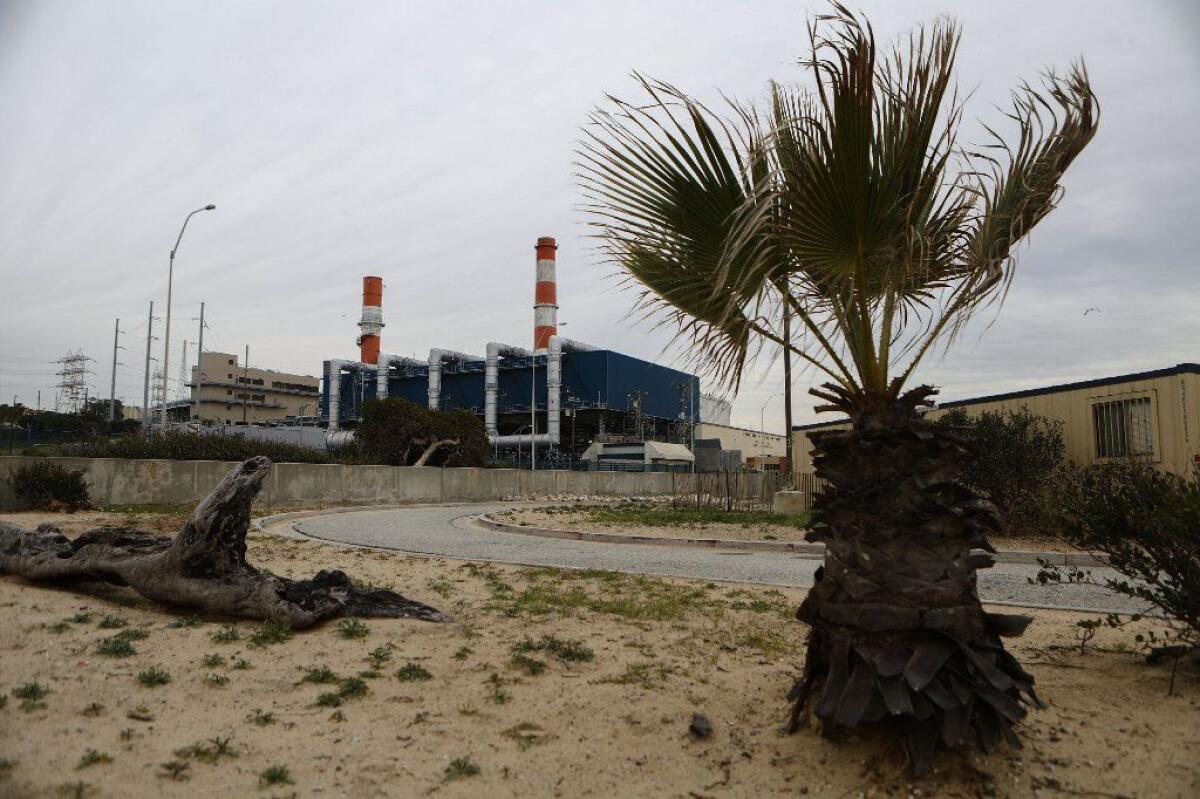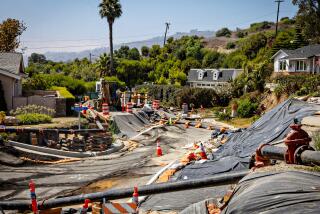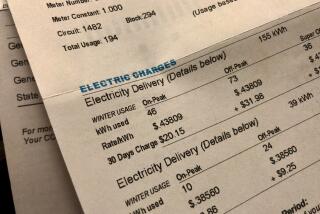Q&A: Edison CEO talks wildfires, climate change and the utility’s vanishing monopoly
These days, Pedro Pizarro spends a lot of time fighting fires.
Pizarro is president and chief executive of Edison International, parent company of Southern California Edison, which provides electricity to 15 million people. Unlike Pacific Gas & Electric — which could face tens of billions of dollars in liabilities from fires linked to its infrastructure — Pizarro’s company has stayed out of bankruptcy court despite facing similar wildfire-related risks.
Confronting the wildfire threat isn’t Pizarro’s only priority. Edison is promoting itself as a critical player in California’s fight against climate change, arguing that the cheapest strategy for slashing planet-warming emissions involves putting millions of electric cars on the road and switching home heating systems from gas to electricity — steps that would expand the market for the product Edison distributes and sells.
At the same time, Edison is losing many of its customers to government-run energy providers known as community choice aggregators, or CCAs. Nearly 1 million homes across Southern California now buy energy from the Clean Power Alliance, although Edison still operates the poles and wires that deliver electricity to those customers.
The Los Angeles Times sat down with Pizarro last week at Edison’s headquarters in Rosemead, a few days before investigators announced their finding that the company’s power lines ignited the Thomas fire, which killed two people. The following conversation has been condensed and edited for clarity.
Some observers have described PG&E’s Chapter 11 filing as the first climate change bankruptcy. Do you see it that way?
I don’t know if it’s all about climate change, but it’s certainly catalyzed by climate change. When I think about the wildfire issue in California, it’s born from a lot of things. It is climate change. It’s drought. It’s dead trees, and weather conditions that have enabled fires to be a lot more destructive.
We all saw the Thomas fire in Southern California — having 1% humidity on the coast in Santa Barbara in December is not the way things have usually been.
There are other things too, though. My wife grew up here, and when she was a girl, they talked about these as “forest fires,” because it was the forest, and few people lived in the higher-risk areas. Now the term you hear is the “wildland-urban interface,” which has a lot of homes and businesses. We collectively as a society have built into those areas. And then we as the electric utility have an obligation to serve those homes and businesses and string our wires there.

Edison has said its equipment probably helped spark the Thomas fire, but you haven’t been found responsible for as many deadly or destructive fires as PG&E has. Why isn’t your company in the same dire straits as PG&E?
I’m just going to be honest and say at least in part, it’s luck.
There are a lot of things we’ve done operationally, even before the fires, that have helped mitigate the risk. I’m proud of what our team has done. We have a lot more work to do. But there’s an element of “there but for the grace of” — or however you want to think about it.
We as a state, as an economy, can’t roll the dice on this. We need to have the right budgets for fire suppression. If you’re going to have a home in a high-risk area, what are the safeguards that you need, what are the setbacks, what are the roof materials? And as a utility, how do we harden infrastructure? How do we continue to change our operations? You’ve got to control all that stuff too.
Southern California Edison unveils plan to prevent wildfires »
How much can you actually do to reduce the risk of your infrastructure starting fires, versus just crossing your fingers and hoping for the best?
There are several tens of percents that we know we can reduce the risk. As an initial step, we think covered conductors, combined with vegetation management practices, combined with other equipment we’re changing out in high fire-risk areas — that all combines to an overall risk reduction.
At least today, we can’t take the risk to zero. I don’t think the risk ever gets to zero, because the reality is that we as a society, everything we do has some risk inherent in it. Whether it’s driving a car or riding a bicycle, there’s a risk in everything we do every day.
I’ve heard people suggest Edison could be one big fire away from bankruptcy. Do you think that’s accurate?
Yes. Is it one big fire, is it two big fires? The reality is that with the potential scale we’ve all now learned these fires can have — and with the current policy in the state that pins the liability on utilities — that has led to significant uncertainty about our ability to recover our costs from customers, even if we think we’ve been prudent. And therefore, if we have one or two or three other major events like this, yes, that could at some point exceed our balance sheet capacity.
PG&E’s bankruptcy could slow California’s fight against climate change »
Your company has been trying to change the way California’s liability rules are applied to utilities when their equipment ignites fires, so that you’re allowed to charge the costs to customers, rather than shareholders, as long as you weren’t negligent. Do you think you’ll ever convince the public that’s a good idea?
We’re not looking to get off the hook if we have been imprudent. We need to be on that hook. We have an obligation to our communities to do everything we can to keep them safe.
The standard for utilities is one of prudency, though. Just to be blunt about it, perfection is not attainable. We have a million and a half poles. We have three quarters of a million transformers. We have a database of trees that we manage that’s 900,000 trees today, and we trim 400,000 trees a year. We do that over 50,000 square miles, with a workforce of about 12,500 employees and another several thousand contractors.
We do that wanting first and foremost to be safe, but then also balancing reliability and cost. And for anything we do, we can always do better by charging more. And so the standard can’t be a perfection one.
Study says utilities should only pay for wildfires if they are negligent »
One of your company’s strategies for reducing fire risk is to de-energize power lines during dry, windy conditions that could lead to dangerous ignitions, shutting off the power in those areas. What should Edison customers expect this year, in terms of preemptive power shutoffs?
We have done a lot of work in refining our standards for that. I think it’s possible we could see a higher rate of power shutoffs as we take a better look at what those risks are in specific areas. We’ve also tried to make them more granular, so we can disturb as few customers as possible.
I think our customers can expect us to turn the power off if that is what is needed to safeguard public safety.
We would hope that as we layer on other protections, we’ll be able to rely less on the power shutoffs, and more on those other tools.
How often should Edison customers in fire-prone areas expect to have their power shut off preemptively?
I think that’s kind of hard to say sitting here up front. It’s just going to be so weather-dependent, and we’ve seen a lot of volatility in weather, right?
The reality is nothing is risk-free. By shutting off power, we reduce the risk or maybe even eliminate the risk of our equipment being involved in starting a fire. But now the reality is you’re creating other risks for the customer. Stoplights go out in the town, or now you have the hospital relying on whatever supply of diesel it has for its generators.
California looks to power shutoffs as a faster, cheaper wildfire solution »

Moving on from wildfires: Los Angeles just announced it’s going to shut down three gas-fired power plants ahead of schedule. How quickly do you think California can stop burning gas for electricity? Will it take until 2045, which is the deadline for the state’s 100% clean energy mandate, or can we get there sooner?
I think there will be continued pressure on gas. Energy storage is moving so quickly and enabling better integration of renewable resources, and renewables themselves are going up the S-curve in terms of maturity — they’re getting cheaper.
I was running power procurement for Edison back in 2004. If you look at some of those contracts back then, you could see solar that cost up in the teens — 13, 14 cents per kilowatt-hour. Today, there are public announcements of prices where you’re seeing solar at 3 cents per kilowatt-hour or under. If you inflation-adjust, it’s an even more dramatic decline in cost. There was a project for Tucson Electric Power that was a combination solar and storage at around 4.5 cents per kilowatt hour.
If California is serious, which I believe it is, about the 40% reduction in greenhouse gases by 2030 and the 80% by 2050, that will lead to a lot of reduction in natural gas use in the state. It’s just the math of not having enough space for that many fossil fuel molecules.
How will L.A. replace three gas plants that Mayor Eric Garcetti plans to shut down? »
What do you think are the most important things that need to happen for California to meet those greenhouse gas reduction targets?
The state first needs a sense of urgency. When we did that electrification study in 2017, part of what I was hoping it would do would be to catalyze a greater sense of urgency in the discussions across the state. Because the state had a lot of different mandates. 2030 seemed like a long time away, but it was only 13 years away at that point. Now it’s 11 years away. And there’s still a pretty big changeover of the economy that needs to happen to make 2030 a reality.
Buildings are a great example. If you believe that more building electrification and efficiency measures are going to be needed, then that’s got to get into the next update to building standards. And then you also just need the market to deliver the solutions. We need to see more electric vehicles that are more affordable and more plentiful. And I think that’s starting to happen.
San Diego Gas & Electric says it wants to get out of the business of buying and selling electricity because so many of its customers are leaving for community choice aggregators. Has Edison explored the idea of getting out of energy procurement and becoming a poles-and-wires company exclusively?
The devil’s in the details. We don’t make any money on procurement, so this is not a shareholder issue, it’s not an earnings issue. But we view that as really strategic to the state, in that a lot of the story of getting to the 40% greenhouse gas reduction by 2030 will hinge on procuring the right clean resources at the right cost. And so we have a really good team to do that stuff, we’re proud of that.
If at some point the state decides that it wants a different model that doesn’t involve the utilities purchasing, obviously we’ll respect that. We are not today advocating to run from it. We certainly see that as we have more community choice aggregation and we potentially do less of the procurement, that could be a sensible answer at some point.
But as a matter of policy interests and mapping to the objectives of the state, we think that procurement function and the cost impact it ultimately has on customers is really critical, and we want to see it done well.
California’s big utilities are losing their monopolies. Is that a good thing? »
How would you explain to your investors why you’d want to keep buying and selling electricity if you don’t make money from that part of the business?
Part of operating as a regulated utility is making sure you’re acting in whatever are the best interests of the state. Frankly, there’s a level of trust that we need to be gaining from our customers, from our regulators. And particularly as California faces this dramatic journey away from the current mix of resources to one that’s even cleaner, to the extent that we’re needed and helpful there — and the state wants our help with that — I think we have an obligation to help.
More to Read
Inside the business of entertainment
The Wide Shot brings you news, analysis and insights on everything from streaming wars to production — and what it all means for the future.
You may occasionally receive promotional content from the Los Angeles Times.











